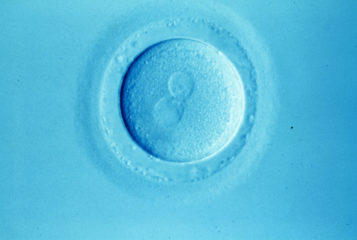The global burden of infertility has been estimated as 48 million. As we approach the 40th anniversary of the birth of Louise Brown, the first child born following IVF, it is timely to reflect on the global revolution of assisted reproduction services.
We can use the term 'revolution' because there has been a dramatic rise in the number of IVF cycles undertaken. It's now estimated that there are close to two million cycles annually across all continents. But this high figure belies the huge difference in access to infertility care globally, described most recently by the International Committee for Monitoring Assisted Reproductive Technologies.
The data throw up some unexpected anomalies. For example, affluent nations like the USA and UK take up a low position as measured by cycles of IVF per million population. What is clear from the data is the underpinning socioeconomic impact on an affected individual's ability to access or afford care.
This accessibility varies widely between and within countries. Dr Silke Dyer, a researcher at the University of Cape Town, observed a catastrophic financial burden for those seeking infertility treatment in South Africa. In socioeconomically deprived regions, pelvic infection and the resulting tubal damage is the most common cause of infertility. Despite the enormous challenges, assisted reproduction is emerging in Africa, driven in part by the huge stigma and devastating outcomes that can result from societal lack of awareness of the causes of infertility. However, the pace of development is curtailed by health economics and competing priorities.
The International Federation of Fertility Societies recently held a scientific meeting in Kampala, Uganda, responding to the infertility problem in Sub-Saharan Africa and the fact that effective treatments have not become readily accessible. This landmark event was hosted alongside the Uganda Fertility Society and African Fertility Society and focused on improving access in resource constrained settings.
Africa may seem an unlikely setting for an infertility conference. But the burden of disease resulting from infertility and its treatment aligned with the World Health Organization's12th General Programme of Work (2014-19) and UN's Sustainable Development Goal three, to ensure healthy lives and promote well-being for all at all ages. The meeting was attended throughout by local, regional and global representatives from WHO.
During the meeting we heard from the African Network and Registry for Assisted Reproductive Technology's activity in Sub-Saharan Africa, the challenges presented in this developing setting. In particular, we heard about the high proportion of multiple pregnancies through placement of multiple embryos to boost pregnancy rates. However, we also heard about the opportunities to simplify treatment and raise quality thus reducing risk and increasing access.
Assisted reproduction has changed dramatically in complexity over the last two decades. This is in large part due to the use of adjuvant therapies – so called 'add-ons'. These range from the simple, such as antioxidants, to the complex, such as PGS (preimplantation genetic screening). They can broadly be considered as laboratory, surgical and pharmacological in nature.
In the laboratory, time lapse imaging of embryo development seems intuitively to be a sensible approach to support decision-making in embryo selection for transfer. But like many adjuvants to standard IVF treatment, it has been introduced into routine practice without evidence for benefit.
Assisted hatching has also been widely practiced as an adjunct without supporting evidence. The most recent Cochrane review reported no improvement in live birth rates (nine trials included), with an odds ratio of 1.03 and a 95 percent confidence interval 0.85-1.26. The routine genetic testing of embryos for aneuploidy has generated much debate with a clear difference of approach between North America and Europe. The debate is fluid because of emerging technologies such as next-generation sequencing and the falling cost of diagnostics but for now its place in routine practice remains to be determined.
Surgical interventions such as endometrial injury or 'scratch' is another add-on being adopted in many IVF services with limited evidence to support its routine use. It is often carried out together with a hysteroscopy, another surgical procedure for which there is no demonstrable benefit, but which does carry some risk and can add significant cost to the patient.
Endometrial receptivity is the holy grail of infertility treatment and has been associated with inflammatory cells found in the endometrium such as natural killer (NK) cells. This has led to the hypothesis that the use of immune-modulatory therapies may increase the chance of implantation. The use of NK cells has attracted particular attention and much controversy. Treatments in this category that are commonly advocated include intravenous immunoglobulin, corticosteroids, anti-TNF-alpha and Intralipid, none with good quality evidence to support their use.
These additions to standard ART have added substantially to the cost of treatment, typically borne by the patient. This has not been matched by increased pregnancy rates. Some of these add-ons pose risk to the patient. The consequence of the widespread use of add-ons, far from benefitting the infertile, is in fact decreasing access to treatment. For some couples, it may contribute to catastrophic financial consequences.
Researchers in the USA and Europe have drawn attention to the acceptable pregnancy rates that can be achieved through a less costly approach to treatment. Here, efficiency is gained through all phases of treatment including ovarian stimulation, monitoring, laboratory management and luteal phase.
Infertility knows no boundaries, affecting all people regardless of social status or ethnicity. The disproportionate burden of infertility is born by the most socioeconomically challenged. We have a duty to develop cost-effective processes, ensure service users can access accurate information about the effectiveness of treatment, support practitioners to introduce reduced cost clinical pathways and draw attention to governments and health funders the opportunities created through this approach. We should all follow the lead taken by the American Society of Reproductive Medicine and British Fertility Society to improve access to infertility care.
The hidden costs of IVF will be discussed at the Progress Educational Trust's free-to-attend event 'The Real Cost of IVF', in London on the evening of Wednesday 11 April 2018.
See here for details, and email sstarr@progress.org.uk to book your place.





Leave a Reply
You must be logged in to post a comment.